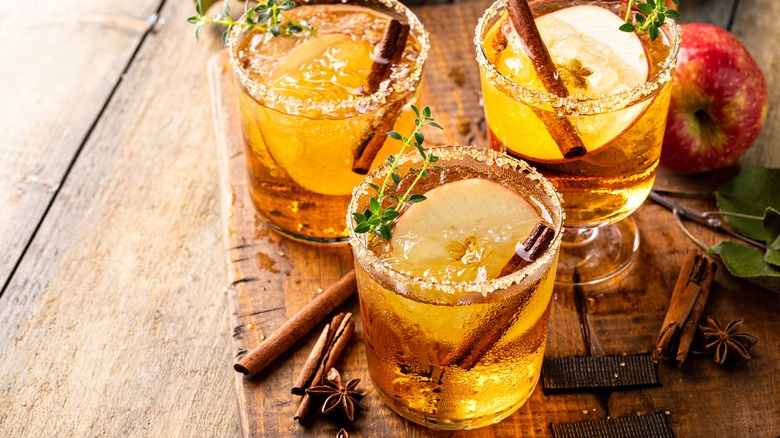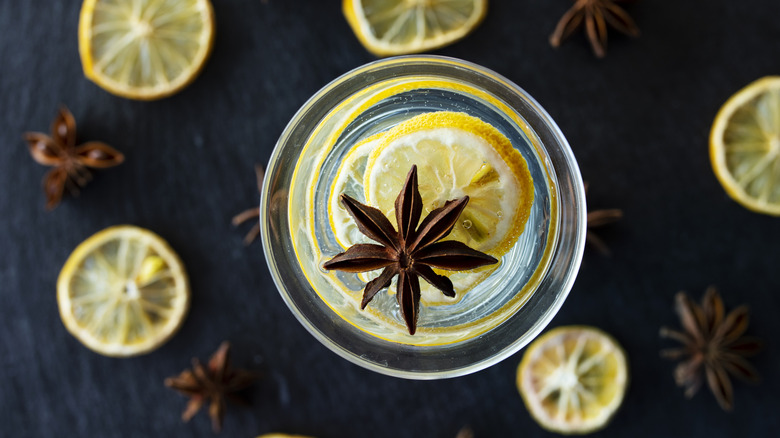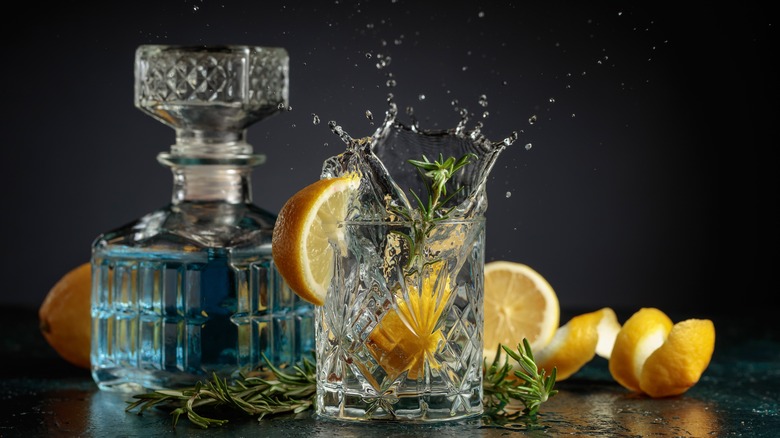Infuse A Bottle Of Flat Tonic Water To Upgrade Your Home Mocktail Bar
For weekends or days off when you can sleep off extra alcohol, mixing some good cocktails to sip on at home or with friends is a wonderful idea. But if you have work or studies tomorrow ... maybe a mocktail might be a better option.
Fortunately, there are plenty of excellent no-proof drink recipes you can try, some of which even mimic the look and flavor of popular cocktails, like the virgin piña colada. If you still want some of the booze-like buzz in your drink, though, LifeHackers has a pretty smart trick for you: use flat tonic water.
If you've ever tried your hand at mixing a gin and tonic, you'll remember that part of the charm of tonic water as a cocktail ingredient is its fizzy bubbles. That won't do here — for the best mocktails, you want the tonic water to flatten out. The carbonation will just distract from the flavors of the infusion you'll be making. Then, mix it with a bunch of other ingredients, including botanicals like juniper berries. The result is a faux alcohol that tastes surprisingly similar to gin, and that you can use to imitate any botanical-forward mocktails, like a virgin dry martini!
Why flat tonic water is such an awesome upgrade
Tonic water has two key flavor components: sugar, which provides sweetness, and quinine, which gives it a bitter tinge. For those who know their way around a liquor shelf, you'll notice that these two basic tastes make up the flavor base of many botanical spirits. Take absinthe, for example, with bitter wormwood and the sweet-tasting anise as its core flavors. Aquavit (especially the barrel-aged kind) also has a similar mixture of tastes. The blend of herbs and spices adds a bitter note, while the time spent aging in sherry barrels imparts a mildly sweet, vanilla-like taste.
These are all fancy examples, though. For a perfect match with flat tonic water, you don't need to look any further than good old gin. Distilled from juniper berries, gin naturally has a bittersweet taste underneath the perfumery spices and warmth of the added botanicals. You can use the flat tonic water as a foundation; then, by infusing it with some extra ingredients, you'll have a pretty good non-alcoholic spirit base in hand.
Easy infusions to try with tonic water
The recipe for this is pretty flexible. Depending on what you have on hand — and the type of liquor you want to mimic — you can swap out the ingredients as you see fit. For a gin-like flavor, follow LifeHackers' recipe, which involves infusing the fizz-less tonic water (diluted with equal parts water to take the quinine's bitter edge off) with juniper berries, peppercorns, lemon zest, and bay leaves. The simplest method involves combining all the ingredients in a jar and letting them infuse for a couple of days in a cool, dry place. If you have an immersion circulator (sous-vide machine), you can combine the ingredients and have the infusion done within 15 minutes. Once infused, simply strain out the botanicals, and voilà — gin mocktail base!
For something resembling aquavit, you can try infusing caraway and dill. It'll make for a pretty interesting bloody mary (sans the alcohol, of course). You don't have to strictly follow any botanical spirit recipes, though. For instance, you can add a touch of lavender for a more floral twist to your mocktail!
While it's tempting to get creative right off the bat, it's better to start with a proven recipe, like the faux gin above. You might not always end up with something drinkable by mixing and matching ingredients. But since you're just risking some tonic water and sprinkles of herbs, it's still good fun playing around with different mixes!


